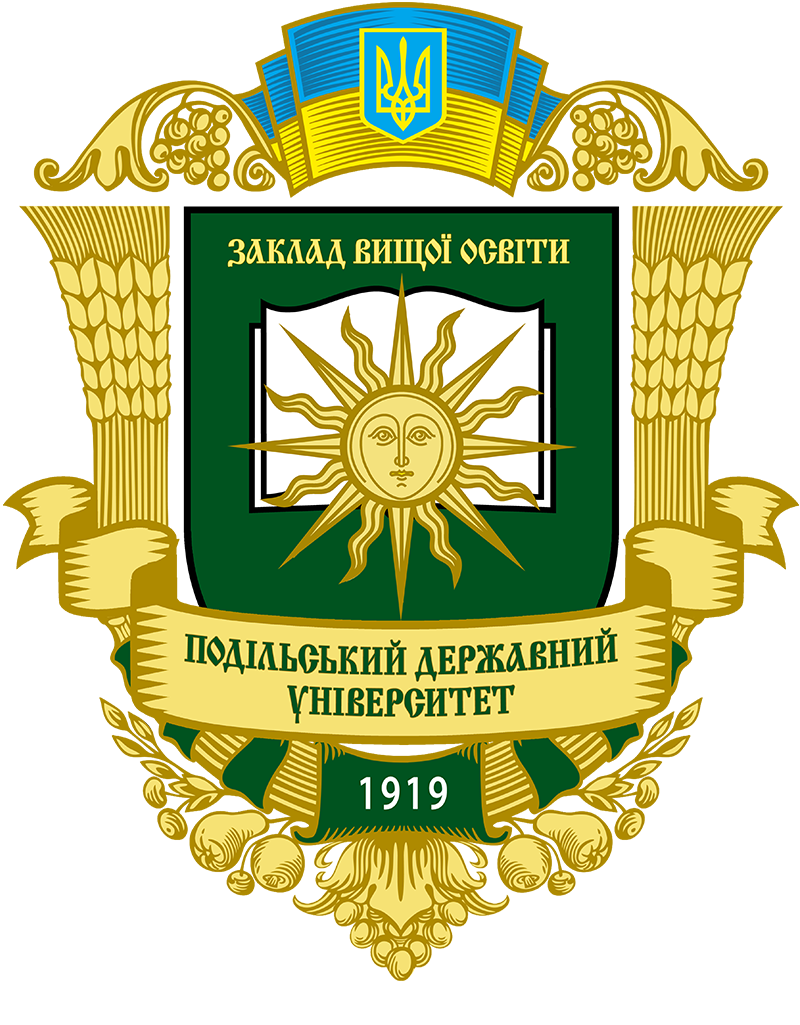INFLUENCE OF THE ACTIVITY CLASS OF PIGS ON THEIR FATTENING TRAITS
DOI:
https://doi.org/10.37406/2706-9052-2025-1.21Keywords:
pigs, fattening, movement, productivity, feed conversion, average daily gain, live weightAbstract
Modern industrial pig farming is based on careful control of animal performance, including assessment of their behavior, health, productivity and feed efficiency. One of the key factors affecting productivity is the level of movement activity of pigs. It determines the body’s energy balance, muscle growth, feed conversion and carcass meat characteristics. In addition, animal activity is linked to the overall welfare of pigs. Taking into account the needs of production, it is necessary to study the impact of movement activity, which allows for ethological monitoring of animals in the farm. The research was conducted in the conditions of the agricultural enterprise “Agrofirm «Mig-Service-Agro»” in Mykolaiv region. The experiment used 120 heads of fattening young animals obtained from combinations of parental pairs ♀(LW×L)×♂D and ♀(LW×L)×♂P. To assess locomotor behavior, the locomotor activity index (LAI) was used, on the basis of which the experimental pigs were divided into two groups: active and passive. The age of reaching a weight of 100 kg, average daily weight gain, feed conversion, and fattening quality index were determined in the experimental animals. Studies have shown that active pigs showed higher growth rates than their passive counterparts. The average live weight at placement for fattening was higher in active piglets (30.2 ± 0.24 kg) compared to passive ones (28.6 ± 0.33 kg, P < 0.001). When reaching a pre-slaughter weight of 100 kg, active animals had a shorter fattening period of 151.8–153.6 days, which is 1.2 and 2.9 days less than in passive pigs, depending on the combination. The average daily weight gain of active pigs was 924.7–977.3 g, which was 7.8% and 1.72% higher than that of their passive counterparts. Also, active pigs had a more efficient feed conversion (2.51 and 2.53 kg), which indicates a more efficient use of feed by animals to increase muscle mass. The results of the experiment allow us to recommend the introduction of methods that will contribute to the optimal level of activity, including environmental enrichment and behavioral correction.
References
Аналіз біометричних даних у розведенні та селекції тварин : навчальний посібник / С.С. Крамаренко, С.І. Луговий, А.В. Лихач, О.С. Крамаренко. Миколаїв : МНАУ, 2019. 211 с.
Відомчі норми технологічного проєктування Свинарські підприємства (комплекси, ферми, малі ферми), ВНТП-АПК – 02.05. Київ : Мінагрополітики України, 2005. 98 с. URL: https://lugdpss.gov.ua/images/bezpechnist_veterynariya/Svynarski-pidpryyemstva-VNTP-APK-02.05.pdf.
Коробань М.П., Лихач В.Я. Відгодівельні якості молодняку свиней за різних вагових кондицій в умовах промислової технології. Подільський вісник: сільське господарство, техніка, економіка, 2023. Вип. 41. С. 26–32. http://dx.doi.org/10.37406/2706-9052-2023-4.4.
Ладика В.І., Хмельничий Л.М., Повод, М.Г. Технологія виробництва і переробки продукції тваринництва : підручник для аспірантів. Одеса : Олді+, 2023. 244 c.
Методологія та організація наукових досліджень у тваринництві : посібник / за ред. І.І. Ібатуліна й О.М. Жукорського. Київ, 2017. 328 с.
Наказ Міністерства розвитку економіки, торгівлі та сільського господарства України № 224 від 08.02.2021 «Про затвердження вимог до благополуччя сільськогосподарських тварин під час їх утримання». Зареєстрований 18.02.2021 Міністерством юстиції України № 206/35828.
Підвищення ефективності промислового виробництва свинини на основі використання етологічних факторів : монографія / В.Я. Лихач, А.В. Лихач. Миколаїв : Іліон, 2023. 422 с.
Підвищення продуктивності свиней за використання сучасного генофонду та інноваційних технологічних рішень : монографія / В.Я. Лихач, Р.В. Фаустов, П.О. Шебанін, А.В. Лихач, Л.Г. Леньков. Миколаїв : Іліон, 2022. 275 с.
Технологія виробництва продукції свинарства : навчальний посібник. / М. Повод, О. Бондарська, В. Лихач, С. Жишка, В. Нечмілов та ін. ; за ред. М.Г. Повода. Київ : Науково-методичний центр ВФПО, 2021. 360 с.
Технологічні інновації у свинарстві : монографія. Київ : ФОП Ямчинський О.В., 2020. 290 с.
Хмельничий Л.М., Вечорка В.В., Шпетний М.Б., Бордунова О.Г., Павленко Ю.М., Опара В.О. Відгодівельні та забійні якості свиней різних вагових категорій, дорощених у станках на полімерній та бетонній підлозі. Вісник Сумського національного аграрного університету. Серія «Тваринництво», 2020. Вип. 1(40). С. 3–10. https://doi.org/10.32845/bsnau.lvst.2020.1.1.
Council Directive 2008/120/EC of 18 December 2008 laying down minimum standards for the protection of pigs (Codified version). Official Journal оf the European Union. L 47. 18.2.2009, 5–13.
Council Directive 2010/63/EC of 22 September 2010 on the protection of animals used for scientific purposes. Official Journal of the European Union. L 276/33. 22.09.2010, 15–47.
Hoey I. Feed conversion ratio improves for rearing herd. Pig World, 2021. URL: https://www.pig-world.co.uk/news/feedconversion-ratio-improves-for-rearing-herd.html. (дата звернення: 13.12.2025).
Leen F., Broeke A.V., Aluwé M., Lauwers L., Millet S., Meensel J.V. Optimising finishing pig delivery weight: participatory decision problem analysis. Animal Production Science, 2017. Vol. 5. P. 1141–1152. https://doi.org/10.1071/AN16098.
Lu D., Jiao S., Tiezzi F., Knauer M., Huang Y., Gray K.A., Maltecca C. The relationship between different measures of feed efficiency and feeding behavior traits in Duroc pigs. Journal of Animal Science, 2017. Vol. 95(8). P. 3370–3380. https://doi.org/10.2527/jas.2017.1509.
Povod M., Tishchenko O., Mykhalko O., Verbelchuk T.V., Verbelchuk S., Sherbyna O., Kalynychenko H. Growth intensity and fattening qualities of pigs during changes in feeding types during reproduction and fattening. Scientific Messenger of LNU of Veterinary Medicine and Biotechnologies. Series: Agricultural Sciences, 2022. Vol. 24(96). P. 50–60. https://doi.org/10.32718/nvlvet-a9607.
Voshchenko I., Povod M. Dynamics of the realization of the genetic potential of fattening qualities of Danish-bred pigs under industrial technology conditions. Scientific Messenger of LNU of Veterinary Medicine and Biotechnologies. Series: Agricultural Sciences, 2024. Vol. 26(101). P. 170–181. https://doi.org/10.32718/nvlvet-a10129.
Więcek J., Skomiał J., Rekiel A., Florowski T., Dasiewicz K., Kosińska M. Fattening and slaughter parameters in the first period of fattening of pigs fed restrictive or semi ad libitum diets. Polish Journal of Food and Nutrition Sciences, 2008. Vol. 58(3). P. 325–329. URL: http://yadda.icm.edu.pl/yadda/element/bwmeta1.element.agro-article-bdf04b52-5a14-4fd9-88a0-c62bef46017e.
Zoric M., Johansson S.E., Wallgren P. Behaviour of fattening pigs fed with liquid feed and dry feed. Porcine Health Management, 2015. Vol. 1. P. 14. https://doi.org/10.1186/s40813-015-0009-7.










